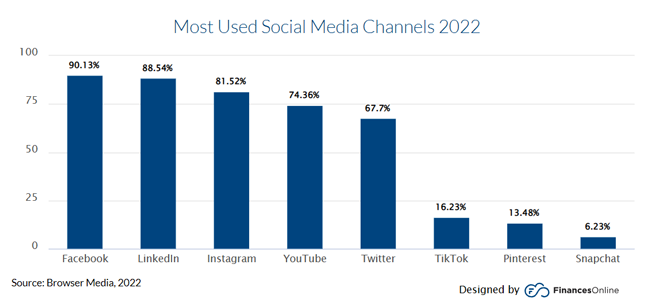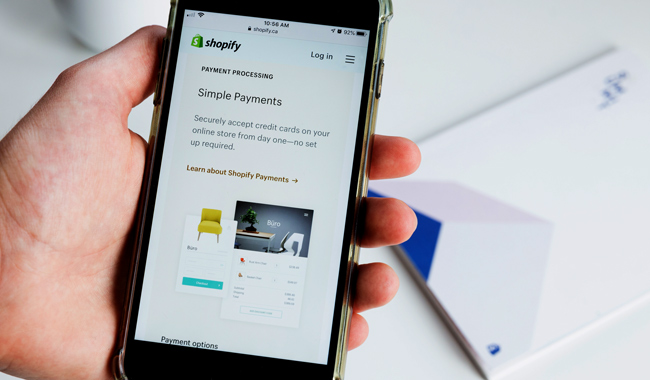Imagine having a conversation with an old friend whom you’ve known for years.
Your familiarity allows you to speak in a language laced with old memories and shared experiences, reflecting the unique bond you share with them.
Similarly, in the context of behavioral targeting, leveraging data on user behaviors and interactions, you can craft personalized messages, offers, and recommendations that feel less salesy, and more like a heartfelt letter from an old friend.
Consequently, you’ll be able to create a connection between your brand and the customer that goes beyond generic discourse and acknowledges and appreciates the customer’s individuality, building a sense of familiarity and understanding.
Today, we’re going to delve into this intimate language of personalized marketing in more detail by analyzing references to the customer’s unique story, their preferences, and their user journey with your brand. We will also cover:
- The tools and resources at your disposal to collect data for personalized marketing
- The benefits of customer segmentation and the implications the practice has for your business
- A step-by-step guide that you can use to build your target audience through behavioral targeting
Without further ado, let’s get straight into how you can unlock the gift that keeps on giving, personal marketing, through behavioral targeting.
1 – What Is Behavioral Targeting?
Behavioral targeting, also known as interest-based or audience-based targeting, is a digital advertising strategy that involves delivering targeted ads to individuals based on their previous online behavior, activities, and interests.
It relies on the collection and analysis of user data to create detailed profiles or segments of individuals with similar behavior patterns and interests, commonly referred to as user personas.
This data can include browsing history, search queries, social media activity, previous purchases, and demographic information. By tracking and analyzing this data, you can gain insights into users’ preferences and tailor their advertising efforts accordingly.
In the following table, we break down the key components of behavioral targeting and why each is crucial to creating effective, personalized advertisements.
| Element | Explanation | Importance Of Behavioral Targeting |
| Browsing History | A record of the websites visited by a user | Helps identify user interests and potential product preferences |
| Search Queries | Keywords used by a user while searching online | Reveals the user’s immediate needs or interests |
| Social Media Activity | Posts, shares, likes, and other activities done by a user on social media platforms | Unveils user’s interests, social connections, and preferences |
| Previous Purchases | A record of the user’s past purchases | Offers insights into the user’s purchasing behavior |
| Demographic Information | Details about the user such as age, gender, and location | Helps segment users into specific target markets |
If David Ogilvy, often referred to as the “Father of Advertising,” were alive today, we believe he would be an avid supporter of behavioral targeting because, during his time, many of his principles and beliefs aligned with the core ideas behind personalized marketing.
For instance, he emphasized the importance of understanding consumer psychology and crafting messages that resonate with their desires and motivations.
Additionally, he believed that effective advertising should be based on thorough research and insights into consumer behavior, rather than relying solely on creative intuition.
However, it’s important to note that user privacy and data protection are crucial considerations in implementing behavioral targeting, and it’s necessary to comply with applicable laws and regulations to ensure user trust and consent.
For example, imagine how creepy and invasive it would feel to encounter an ad that describes eerily personal things about you, such as the breed of your dog or the color of your eyes.
You would probably not want anything to do with that brand because they go beyond behavioral targeting and begin collecting and leveraging sensitive information to advertise their products without your knowledge.
Quick Fact: Epsilon’s research reveals that brands offering personalized experiences have a greater pull, with 80% of consumers more inclined towards making a purchase from them.
2 – Strategies for Collecting Data
There has never been an easier time for marketers to get to know their customers on a detailed level.
People have social media platforms at their disposal to express their opinions, share experiences, and engage in conversations, providing valuable insights and information for marketers.

Source: financesonline.com
For example, let’s say a customer tweets about their positive experience with a skincare product from your company, highlighting specific benefits and results. When other happy customers encounter their tweet, they join the conversation, sharing their own experiences.
By monitoring this conversation, you can gain valuable feedback and use it to develop targeted marketing campaigns and improve your product offering.
However, social media monitoring is only one of the strategies you can use to collect data for behavioral targeting. Other methods include:
Website Tracking and Analytics
Implement tracking technologies, such as cookies or pixel tags, on your website to collect user behavior data.
Analyze this data using web analytics tools, such as Google Analytics, to gain insights into user interactions, such as pages visited, time spent on each page, and conversion actions taken.
![]()
Source: chartio.com
To illustrate, let’s imagine a scenario where you work for an e-commerce store that specializes in outdoor adventure gear.
You use Google Analytics to identify customers who frequently explore hiking and camping equipment categories, suggesting their interest in outdoor adventures.
Using this information, you can send them retargeting ads on social media personalized with content based on the products they spent time exploring on your website, guiding them further along your sales funnel.
“Data really powers everything that we do.”
— Jeff Weiner, Former LinkedIn CEO
Purchase History and Transactional Data

Analyze your customers’ past purchase behavior and transactional data to understand their preferences, buying patterns, and product affinities.
By understanding their purchase history, you can personalize recommendations, identify cross-selling and upselling opportunities, and enhance customer engagement.
Let’s consider you manage an online bookstore that offers a wide range of books across various genres.
By examining the books customers have purchased in the past, you can determine their preferred genres, authors, or book series, to help you understand their specific interests and tailor your marketing efforts accordingly.
For instance, if a customer has consistently purchased mystery novels by a particular author, you can leverage this information to recommend other popular mystery novels within the same genre or by similar authors.
By showcasing personalized recommendations aligned with their preferences, you increase the likelihood of engagement and repeat purchases.
Want a quick summary? The table below highlights the types of insights purchase history offers and how they can be strategically employed in marketing.
| Insight | Explanation | Impact On Marketing Strategy |
| Customer Preferences | Information about customers’ favorite products or brands | Allows for more personalized product recommendations |
| Buying Patterns | Identification of regular intervals or situations when a customer tends to make purchases | Enables targeted promotions during likely buying times |
| Product Affinities | Understanding which products are often bought together | Aids in identifying cross-selling and upselling opportunities |
Behavioral Tracking Through Mobile Apps
If you have a mobile app, you can leverage tracking technologies to collect user behavior data within the app to gain valuable insights into how users interact with your app, their preferences, and their engagement levels.
Let’s say you work as a digital entrepreneur for a food delivery service that operates through a mobile app. With behavioral tracking, you can monitor users’ interactions within the app to understand their favorite cuisines and preferred restaurants.
By analyzing the data, you can identify their ordering patterns and preferences, allowing you to personalize their experience.
For example, if a user consistently orders sushi from a particular Japanese restaurant, you can prominently display pictures of sushi on the app’s homepage, offer exclusive discounts on sushi orders, or send targeted push notifications when new sushi restaurants become available.
Key Takeaway: Behavioral tracking in mobile apps can provide valuable insights into user preferences, helping to personalize user experience and enhance engagement.
3 – Build Your Dream Audience Using Collected Data
Nowadays, customers expect you to understand their needs and desires intimately. If you lack this specific aspect, they go and look for it in your competitors.
Behavioral targeting allows you to tailor your marketing messages and offers in a way that aligns with the specific behaviors, interests, and preferences of your target audience.
By understanding their past actions and interactions, you can deliver highly relevant and personalized experiences that enhance the effectiveness of your marketing efforts and increase your chances of capturing the attention and engagement of your target audience.
Here are some actionable steps you can take to put together a target audience curated with behavioral targeting tactics:
- Define your marketing goals: Start by clearly defining your marketing objectives. Consider what you want to achieve, whether it’s driving conversions, increasing engagement, or improving customer retention.
These goals will guide the types of behaviors you focus on when building your target audience. - Identify relevant behaviors: Determine the behaviors that are most relevant to your marketing goals.
For example, if you run an online clothing store, relevant behaviors might include browsing specific product categories, adding items to the cart, or making repeat purchases. - Analyze and segment data: Using the principles we discussed in the previous section, collect data on user behavior. Analyze the collected data to identify patterns and segment your audience based on specific behaviors and interests.
Look for commonalities among individuals who exhibit similar behaviors to create meaningful segments that you can target with relevant messaging and offers.
For instance, based on your analysis, you may identify a segment of users who frequently visit the men’s shoes category and have made multiple purchases in the past. This segment can be targeted with personalized offers related to men’s footwear. - Personalize marketing campaigns: With your target audience segments in place, tailor your marketing campaigns to resonate with each group’s behaviors and interests.
Craft personalized messages, offers, and recommendations that appeal to their specific needs and preferences.
Going back to the prior example, for the segment interested in men’s shoes, you can create email campaigns personalized with content covering styling tips and suggestions for the shoes, new arrivals, or exclusive discounts.
Remember, your customer’s behaviors and preferences are constantly evolving, and building a target audience based on behavioral targeting is an ongoing process that requires constant monitoring, analysis, and refinement to keep up.
Therefore, by staying attentive to your audience’s behaviors and aligning your marketing efforts accordingly, you can improve engagement, conversion rates, and overall customer satisfaction.
Pro Tip: Don’t neglect the power of small data segments. Even behaviors exhibited by a small group of users can be valuable and present unique marketing opportunities.
Leverage Behavioral Targeting to Aim for Your Ideal Customer’s Heart
Behavioral targeting helps marketers develop a deeper understanding of their audience, allowing them to speak a language that resonates with individuals on a personal level.
In the same way that two people in a close relationship develop a language that reflects their shared experiences and unique bond, behavioral targeting enables marketers to create a customized communication approach that speaks directly to each individual’s preferences, interests, and behaviors.
Reflecting on this, Philip Kotler’s words come to mind:
“Marketing takes a day to learn. Unfortunately, it takes a lifetime to master.”
— Philip Kotler
At OnDigitalMarketing, we provide tactical and real-world education that digital entrepreneurs can leverage to come up with creative and innovative ways to ensure their marketing efforts help them achieve monumental success.
Last year alone, our methods and IP drove $350 million in revenue for our clients.
Sign up for our email newsletter today to gain exclusive access to fresh tips and “how-to’s,” top stories taking the marketing world by storm, and deals with partner websites.

